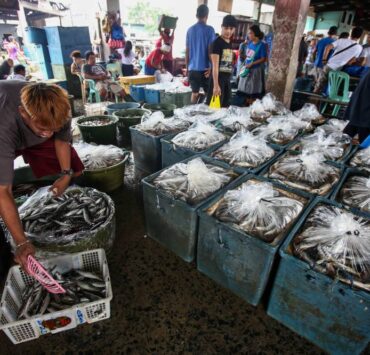No need for crackdown on cement imports, traders say

Several trading firms have called on the Department of Trade and Industry (DTI) to stop its investigation of alleged cement dumping, reasoning that the level of shipment volume of these construction materials into the country remains “normal”.
A joint petition was submitted to the DTI by cement traders Cohaco Merchandising & Development Corp., Fortem Cement Corp., NGC Land Corp., Pabaza Import and Export Inc. and Philcement Corp.
These companies claim there isn’t a significant increase in the volume of cement imports and warned that additional restrictions — what they tag as “protectionist” measures — could only lead to higher cement prices.
The traders cited data showing that cement imports had stood at 5.33 million metric tons (MMT) in 2019, a volume that grew by 10.34 percent to 5.882 MMT in 2020 and by 17.2 percent to 6.894 MMT in 2021.
“Cement suppliers, particularly importers, were compelled to increase the volume of imports to meet the demand for cement in the country,” the traders said in the position paper they submitted to the DTI.
They argued that local production had been “curtailed” as manufacturers faced difficulties operating owing to quarantine restrictions then imposed by the government.
But after the increases during those years, the petitioners noted that imports had declined by 2.89 percent to 6.695 MMT in 2022 before posting a moderate increase of 4.74 percent to 7.013 MMT in 2023.
Last year, they said that cement imports likely only increased by a “modest” 4.96 percent to 7.361 MMT.
The petitioners said that last year’s rate of increase did not warrant the imposition of safeguard measures under the standards of the World Trade Organization (WTO).
“Clearly, the increase in importation is not due to a surge warranting the imposition of safeguard measures. Instead, it is primarily a consequence of reduced domestic production coupled with the necessity to meet ongoing demand,” read the importers’ position paper.
In November last year, the Board of Investments said it had received commendation from the Cement Manufacturers’ Association of the Philippines for initiating the investigation.
Quoting Cement Manufacturers Association of the Philippines, Inc. (CEMAP) executive director Renato Baja, the DTI-attached agency said that the local cement industry could produce up to 50 million tons every year, more than enough to meet the estimated national demand of around 35 million tons.
According to its records, 93 percent of cement imported by the Philippines is from Vietnam.
This is followed by Indonesia with a 5 percent share and China with a 1 percent stake.




















